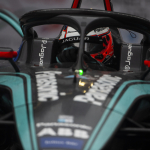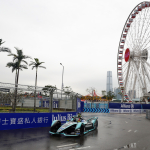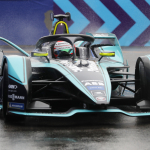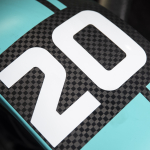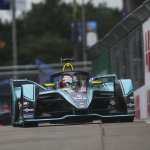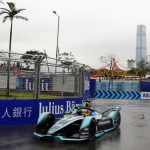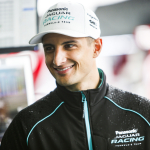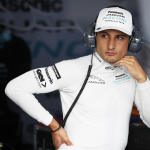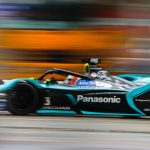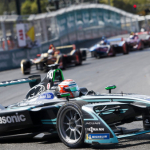
MITCH EVANS CONTINUES POINTS SCORING RUN AT HONG KONG E-PRIX

10 March 2019
The Hong Kong E-Prix and 50th Formula E race was dominated by wet weather and challenging driving conditions. Panasonic Jaguar Racing driver Mitch Evans finished the race in seventh after putting in a determined performance. Team mate Nelson Piquet Jnr started in 15th following a wet qualifying session but suffered suspension damage on the first lap, which led to his retirement.
Hong Kong Big Wheel
- Round five of the 2018/19 ABB FIA Formula E Championship in Hong Kong, China
- Mitch Evans climbed ten places to finish seventh and secured six championship points
- Nelson Piquet Jnr retired due to suspension damage to his Jaguar I-TYPE 3
- Panasonic Jaguar Racing now head to Sanya, China for round six on 23 March
The Hong Kong E-Prix and 50th Formula E race was dominated by wet weather and challenging driving conditions. Panasonic Jaguar Racing driver Mitch Evans finished the race in seventh after putting in a determined performance. Team mate Nelson Piquet Jnr started in 15th following a wet qualifying session but suffered suspension damage on the first lap, which led to his retirement. Evans continued his streak of scoring points at every race this season and rose ten places from 17th on the grid to finish seventh. He kept a cool head in a turbulent race and showcased the race pace of the Jaguar I-TYPE 3. The team will now prepare for its Chinese mainland debut at the Sanya E-Prix on 23 March.
Given the weather and circumstances of the day, I am happy to come away with points for the team. There were a few incidents on track and everyone was pushing to be at the front of the group, so to come through the race and finish in seventh is positive. When you start at the back of the group, the focus has to be on a top ten finish and we were able to achieve that. There are still plenty of things to learn as we go through the season and today is no exception. This is the first wet race we have had in fifty Formula E races, so we will all take a lot away from the experience.
MITCH EVANS
PANASONIC JAGUAR RACING DRIVER, #20
ABOUT PANASONIC JAGUAR RACING
Jaguar returned to racing in October 2016, becoming the first premium manufacturer to join the all-electric ABB FIA Formula E Championship street racing series.
Jaguar’s Formula E programme will create tangible R&D benefits for the electrification of future Jaguar and Land Rover road cars and is designed around the team’s founding principle, ‘Race to Innovate’.
Manufacturers can design their own powertrain, which includes the motor, transmission, inverter and rear suspension. Common components across all teams to control costs include the carbon fibre chassis and battery. The focus is on developing electric vehicle powertrains.
ABB Formula E unveiled earlier this year the Generation 2 racecars. Teams will now have one racecar per driver, and no longer be required to make the mandatory car swap.
Beyond its all-electric concept, Formula E is unique in the world of motorsport for its choice of venues. The championship takes place on temporary street circuits in the centre of the world’s major cities including Riyadh, Hong Kong, Sanya, Monaco, Rome, Paris and ending in a double-header weekend in New York.

